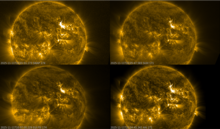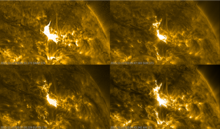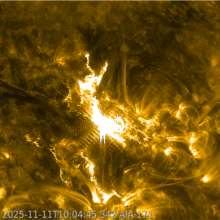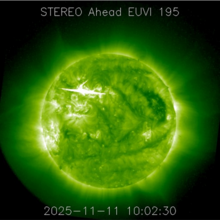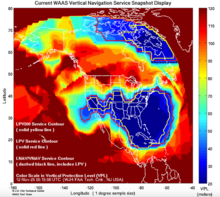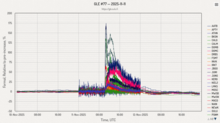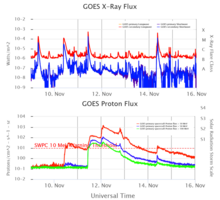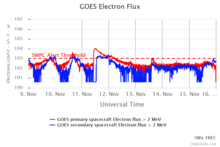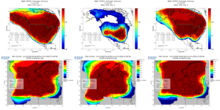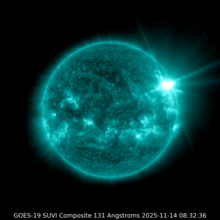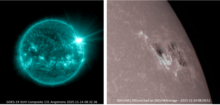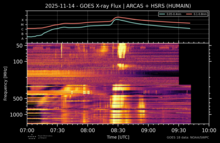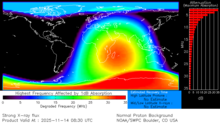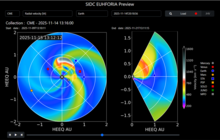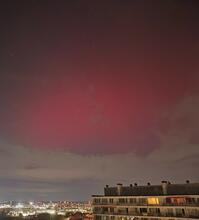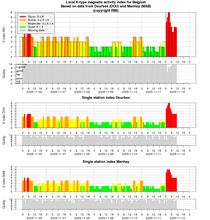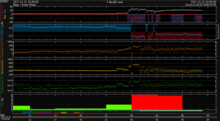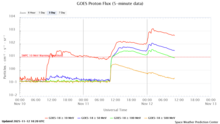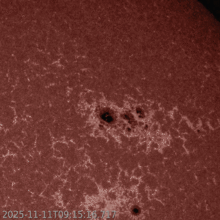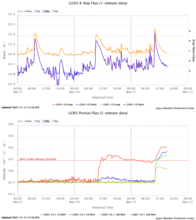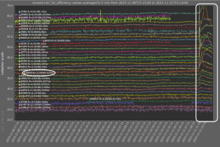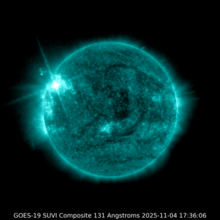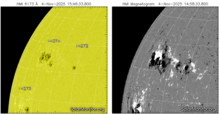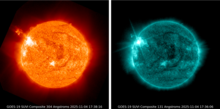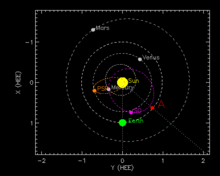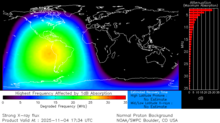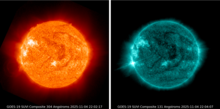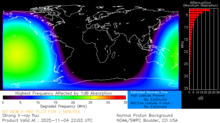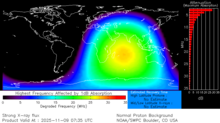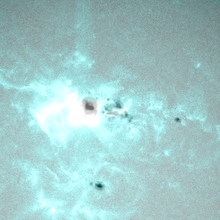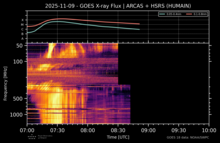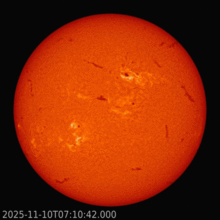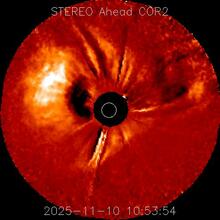news
Submitted on 2025-11-26
The E-SWAN booklets address the real-world impact of solar and geomagnetic activity, focusing on how such phenomena can influence everyday activities and industries, tailored to engage a general audience.
Submitted on 2025-11-25
A fleet of solar satellites have imaged and measured the largest solar flare so far this year.
Submitted on 2025-11-20
NOAA 4274 has now rounded the Sun's west limb. During the previous 2 weeks, eruptions from this active region significantly affected space weather conditions. This newsitem provides an overview of the events associated with the 5 X-class flares.
Submitted on 2025-11-14
After 2 days of relative quiet, NOAA 4274 produced its fifth (!) X-class flare on 14 November. The associated CME is expected to deliver a glancing blow early on 16 November, resulting in -at most- a minor geomagnetic storm. As a result, no aurora are expected to be visible over Belgium. ***UPDATED***
Submitted on 2025-11-12
November 12, 2025, very early in the morning. Colleagues from the STCE, the Belgian Space Weather Centre, admire the northern lights from their terrace in Brussels and are amazed by the spectacle of colors.
Submitted on 2025-11-12
A severe geomagnetic storm took place early on 12 November. Aurora were sighted over Belgium. The fast CME related to the X5 flare from 11 November arrived around 19:00 UTC on 12 November. Its magetic field was much weaker than that of the previous CME, resulting in only a strong geomagnetic storm which is still ongoing. Aurora over Belgium are no longer expected. ***UPDATED***
Submitted on 2025-11-11
NOAA 4274 produced its 4th and -so far- strongest X-class event on 11 November. A series of CMEs may cause strong to severe geomagnetic conditions over the next 2 days. There's a small chance for aurora over Belgium.
Submitted on 2025-11-10
Het STCE, Belgisch Ruimteweercentrum bestaat 20 jaar in 2026! Dat vieren we met een wetenschapsbattle over het weer in de ruimte die je live kan volgen vanuit je klas!
Submitted on 2025-11-04
Active region NOAA 4274 (SIDC Sunspot Group 687), the return of the flare-productive NOAA 4246, has just produced its third X-class flare. ***UPDATED (3)***
Submitted on 2025-10-21
On 20 October, ICAO -the International Civil Aviation Organization- organised a Space Weather User Workshop on the provision and use of space weather information for international civil air navigation. The STCE contributed significantly.
Pages
Zircon - This is a contributing Drupal Theme
Design by
WeebPal.





